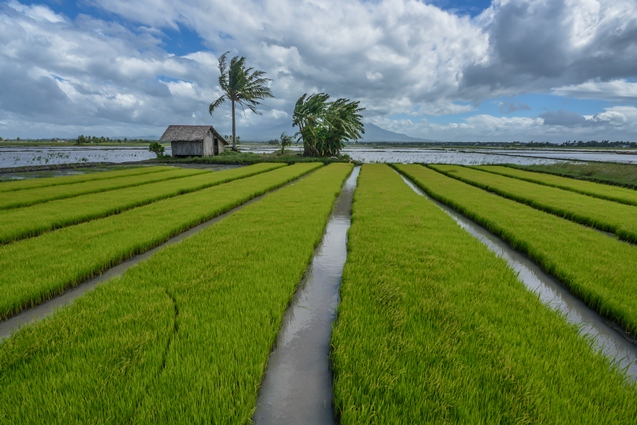 The Department of Agriculture (DA) is targeting a national average rice yield of 6 t/ha at P8/kg production cost for the Filipino farmers to survive the competition in the ASEAN rice market.
The Department of Agriculture (DA) is targeting a national average rice yield of 6 t/ha at P8/kg production cost for the Filipino farmers to survive the competition in the ASEAN rice market.
“This target, supported by strategic government interventions in the medium term (until 2022), will make our farmers competitive and sustain the nation’s rice industry in the long run,” said Dr. Flordeliza H. Bordey, senior socio-economist of the DA’s Philippine Rice Research Institute (DA-PhilRice).
Asked if this is grounded on the goal of rice self-sufficiency, the agricultural policy expert said targeting a higher yield with lower production cost is “never just a question of self-sufficiency.”
“It’s about maintaining the profitability of rice farmers and increasing their competitiveness,” she emphasized.
Competitiveness beyond rice self-sufficiency
With the ASEAN integration, the Philippines is confronted with a different economic scenario. Hence, targeting rice self-sufficiency is no longer enough. Bordey reiterated that the country must produce rice at a competitive price so we can sell it in a common market.
“As our commitment to the World Trade Organization, we now have to replace our quantitative restriction (QR) policy with its tariff equivalent.”
These policy amendments are now at the House of Representatives and the Senate awaiting to be enacted into laws. When fully implemented, the government can no longer restrict the total amount of rice to be imported in the country.
Surviving the competition
Bordey explained that when QR is lifted, importers can bring in rice from ASEAN member-countries as long as they see it profitable with the 35% tariff as our only protection.
A PhilRice-IRRI study estimated that imported rice from Thailand and Vietnam will be around P31 and P27 per kg, respectively.
This scenario is favorable to consumers, especially for poor families who spend about a third of their income to food expenses. However, Bordey warned that lower prices of imported rice will also reduce the price of locally-produced rice.
“This will have a negative impact on the income of our rice farmers who, at present, only produce an average of 3.87 t/ha at a cost of P12/kg,” she added.
Hence, the 6 t/ha at P8/kg cost is what the DA is targeting to maintain the farmers’ profit margin even when cheaper imported rice penetrates our local market.
“This means that rice farmers, say in Nueva Ecija, who spend P48,000 per hectare on average must have a yield of around 6,000 kilograms or 6 tons to survive the competition,” Bordey cited.
Providing safety-nets
While some experts criticize that the 6-ton target is quite ambitious, DA is confident that this is feasible with strategic interventions in place.
Currently, the Department of Agriculture is making farm production credit more accessible through Production Loan Easy Access (PLEA) to encourage farmers adopt high-quality hybrid or inbred seeds, apply proper amount of fertilizers, and engage farm machine service providers.
Beyond a medium term plan, however, experts say that efficiency in the marketing level aside from production is necessary to sustain the country’s competitiveness.
“Of course, farmers who incur higher production costs and are farming in less favorable areas where it is more difficult to increase rice yields, may go out of the rice business,” Bordey said adding that the government should therefore provide safety-nets.
These safety-nets can include training on rice-based farming system for the landed farmers so they can venture on other agriculture activities to complement rice. For the landless workers, skills training on farm machine operation, carpentry, or masonry can be good options so they can find jobs other than being farm workers. These endeavors should not be a lone task of DA but rather a partnership with other government agencies like TESDA.
Safety-nets, according to Bordey, will make it easier for farmers and farm workers to transition to more fruitful economic activities aside from rice. Area planted to rice, however, will eventually shrink when this happens. Hence, those who remain in the rice industry will have to attain higher yields to feed the country.
“If our farmers can produce enough rice for all Filipinos at competitive prices, then our country will achieve sustainable self-sufficiency in the long run,” Bordey concluded.




